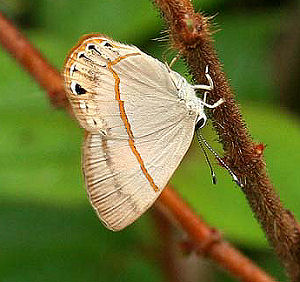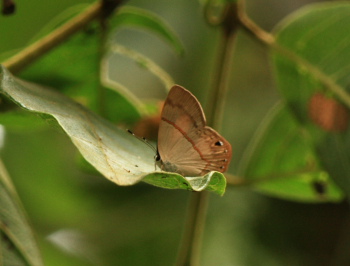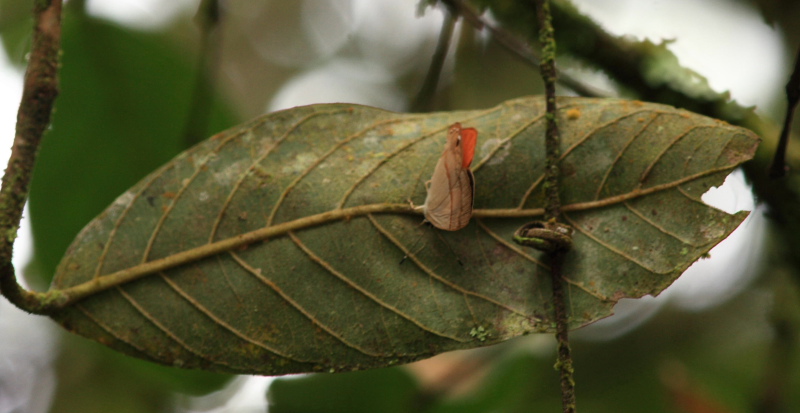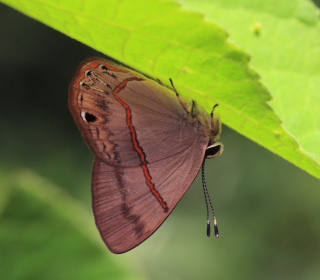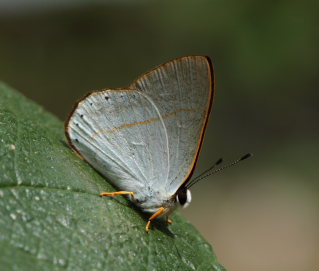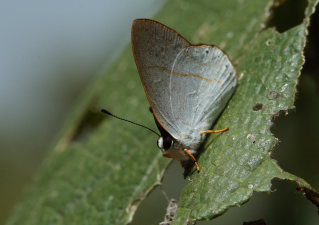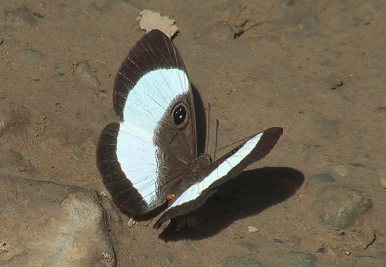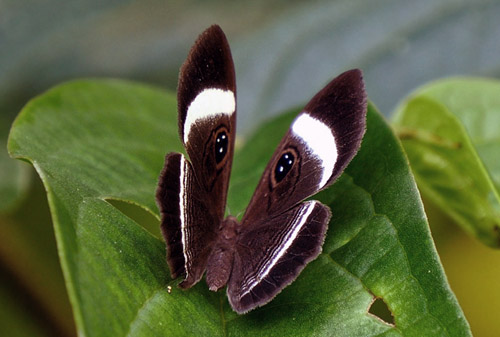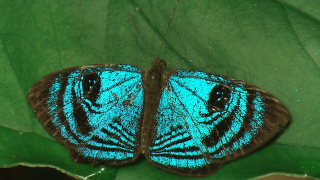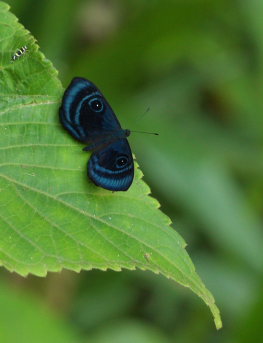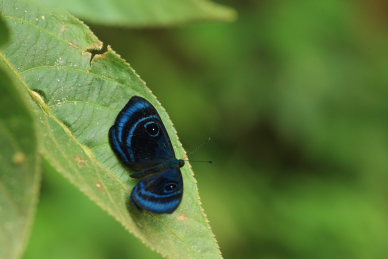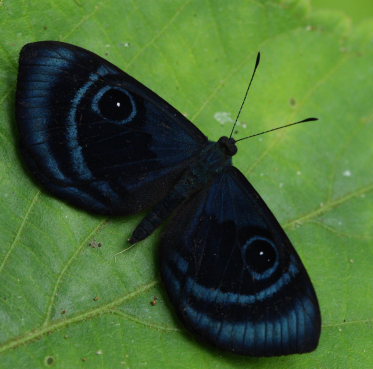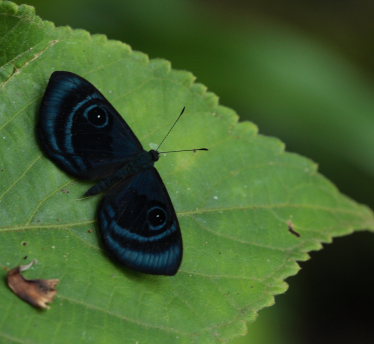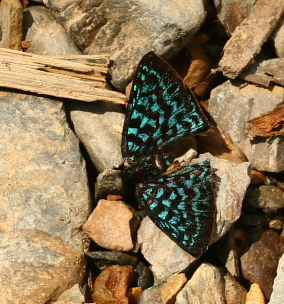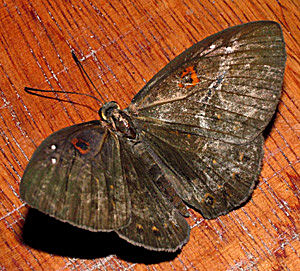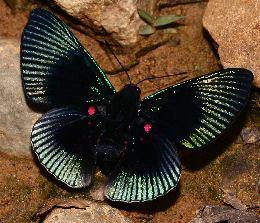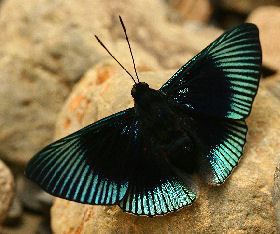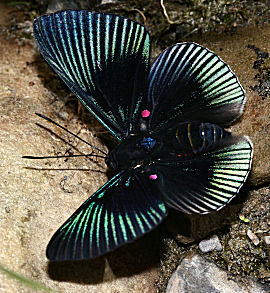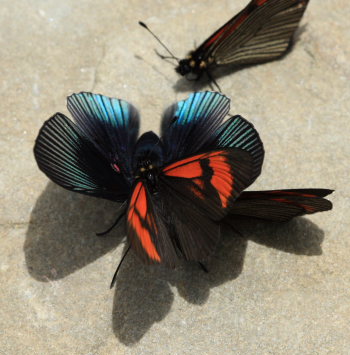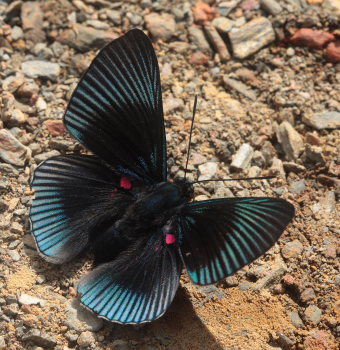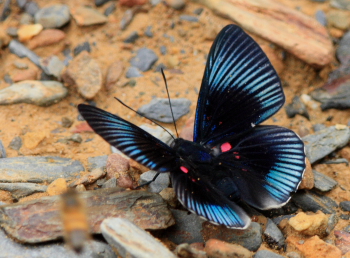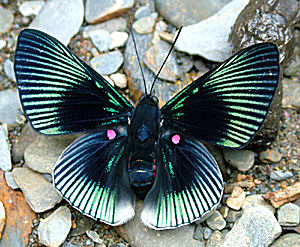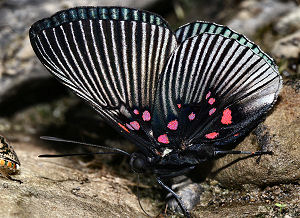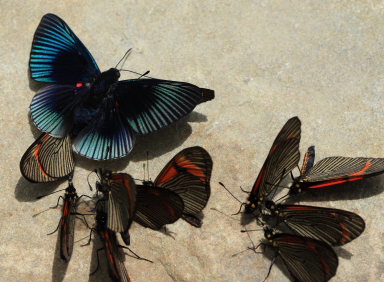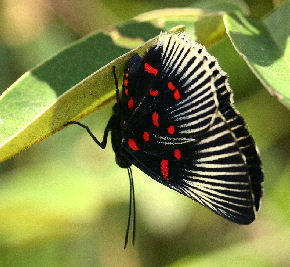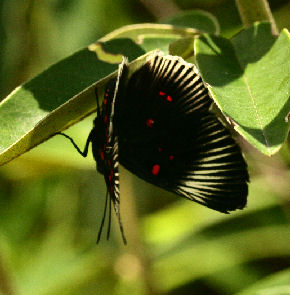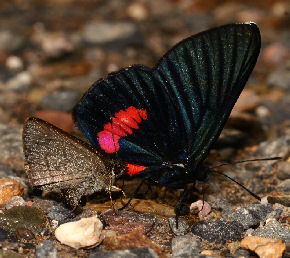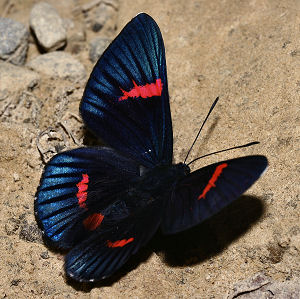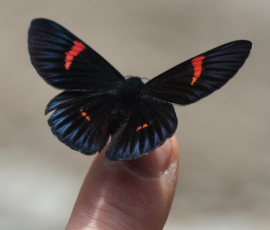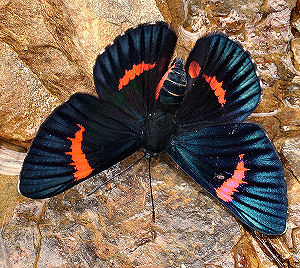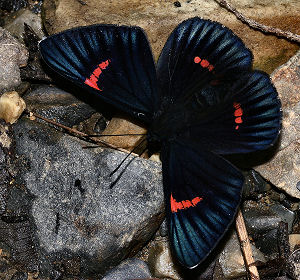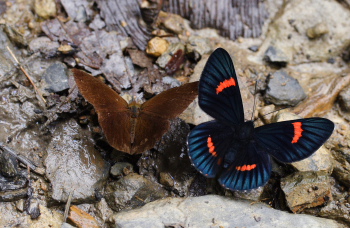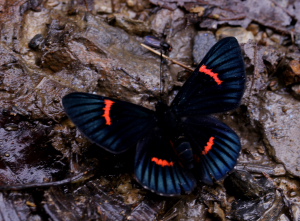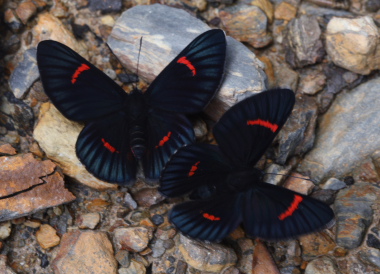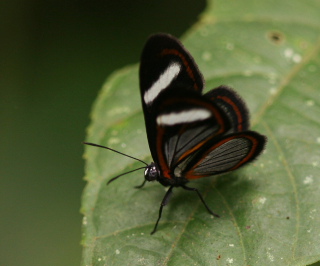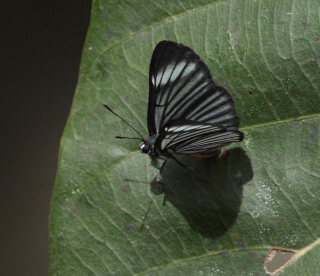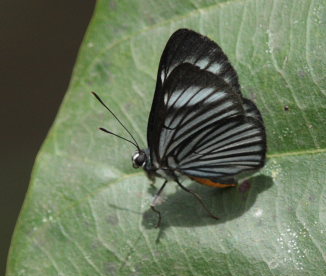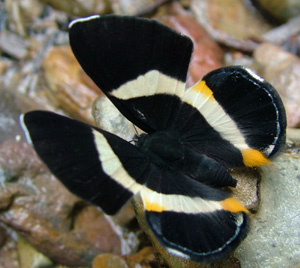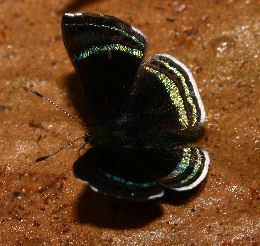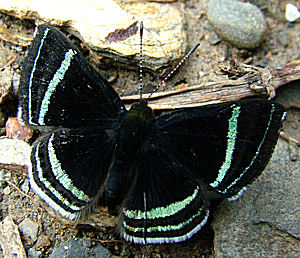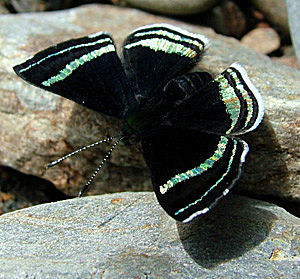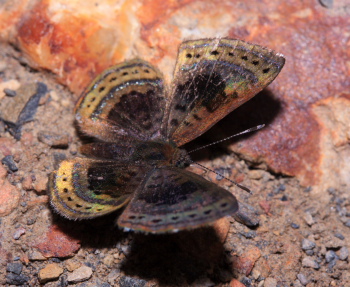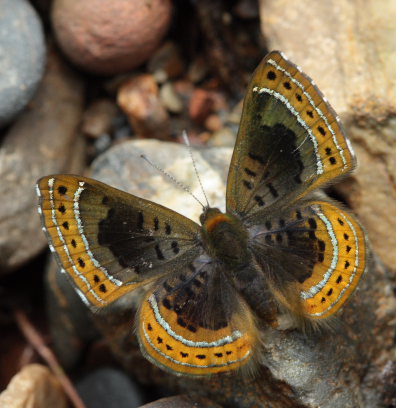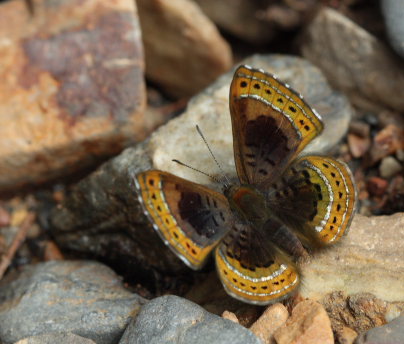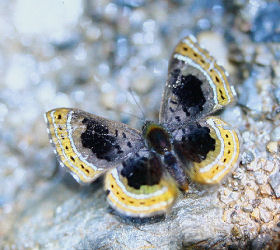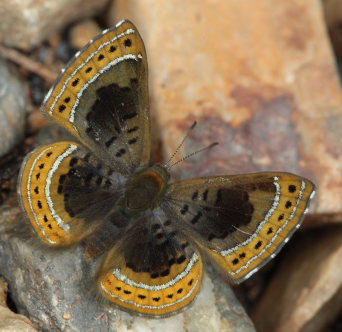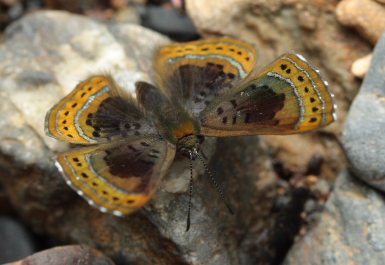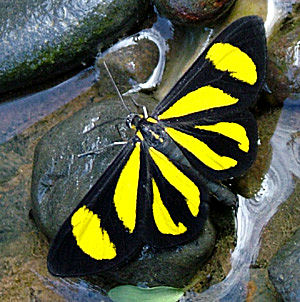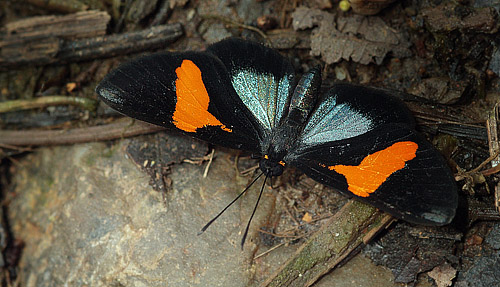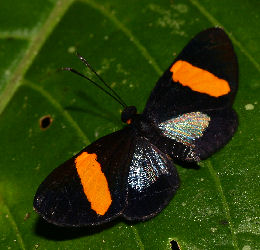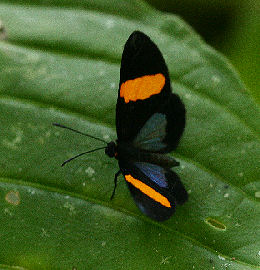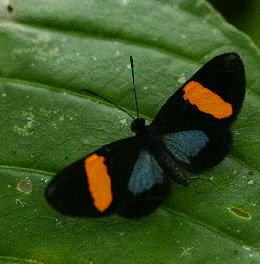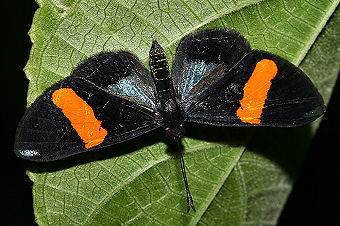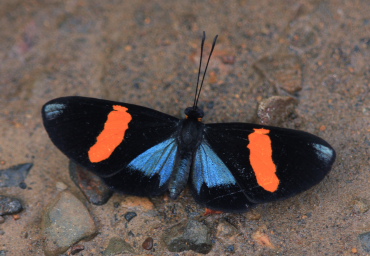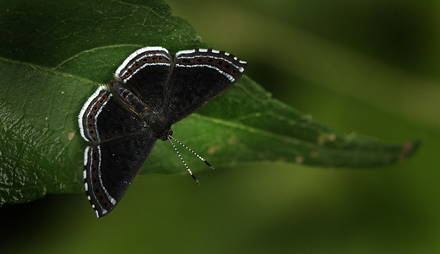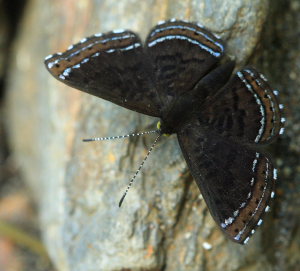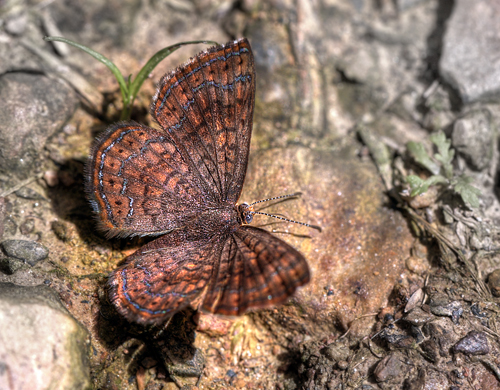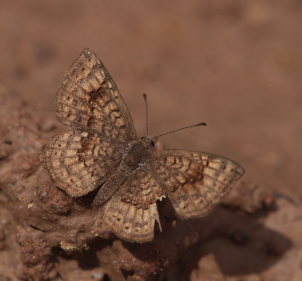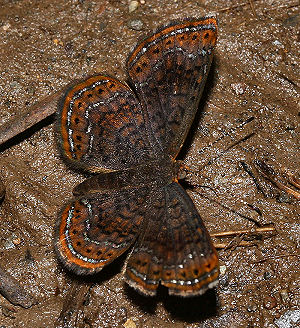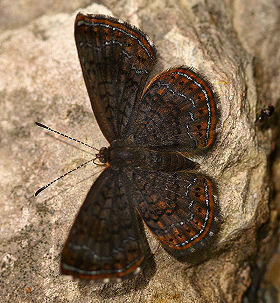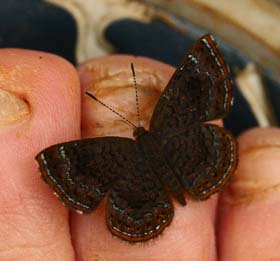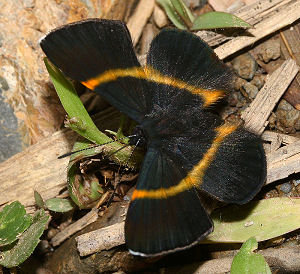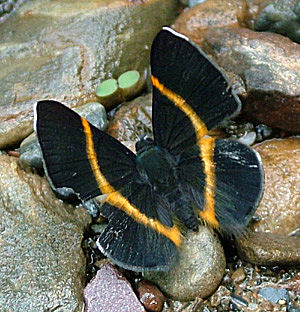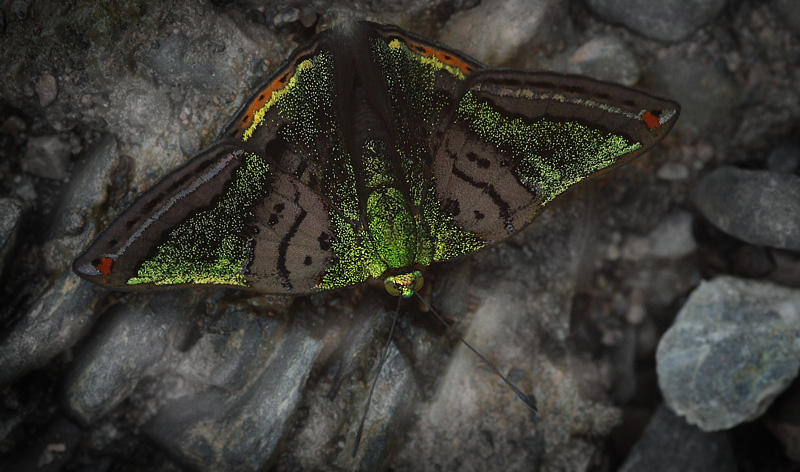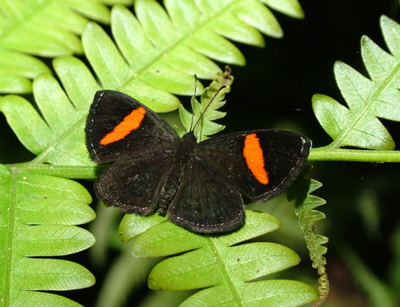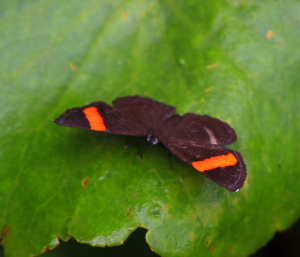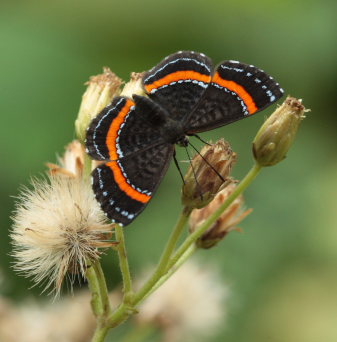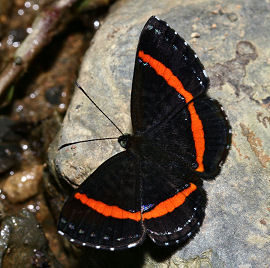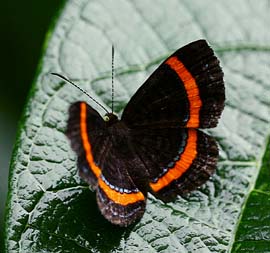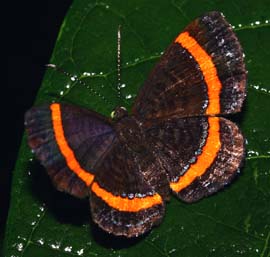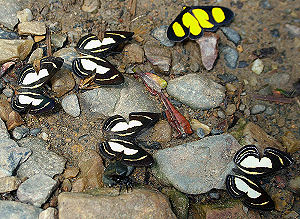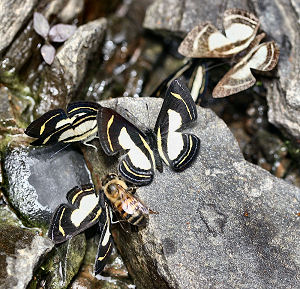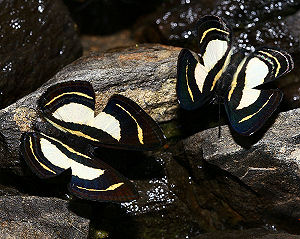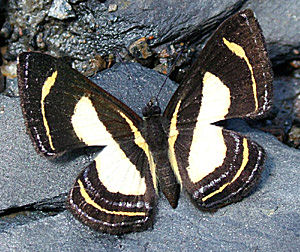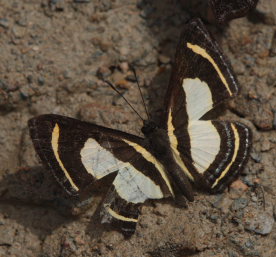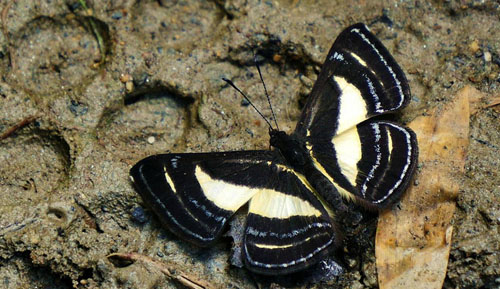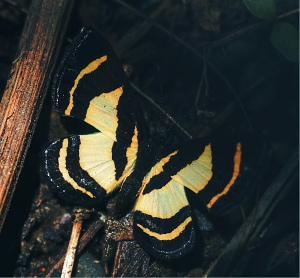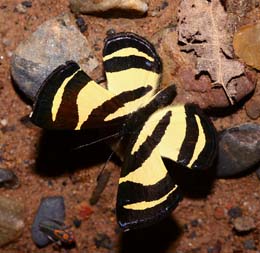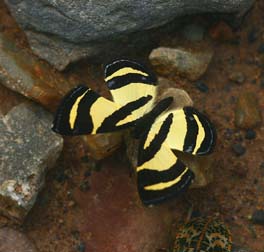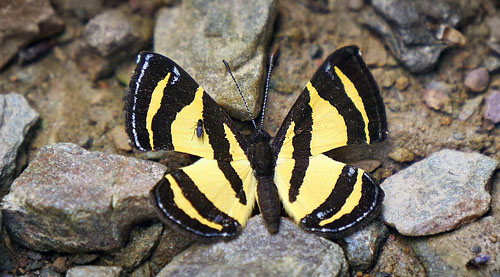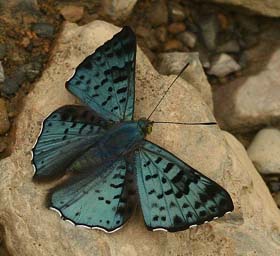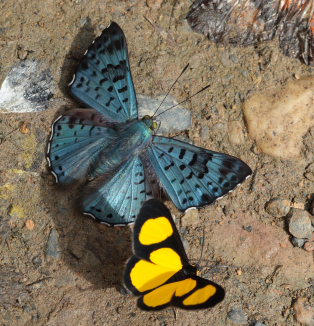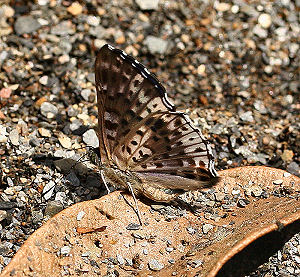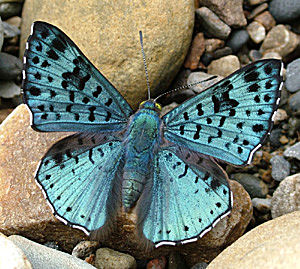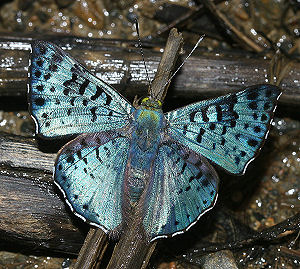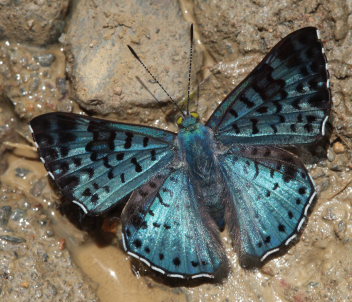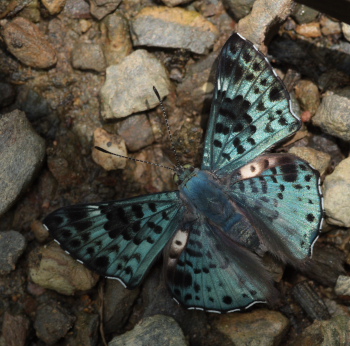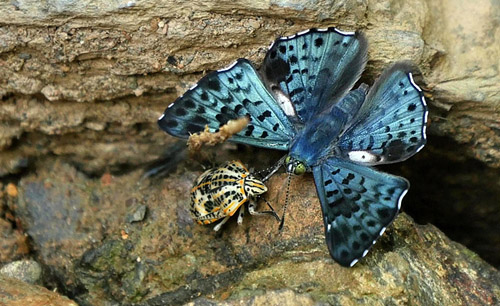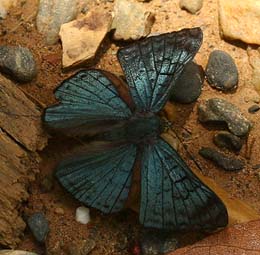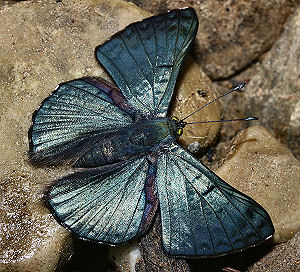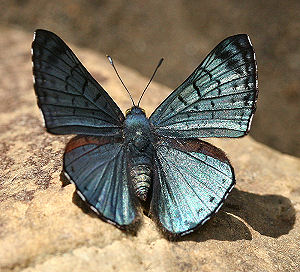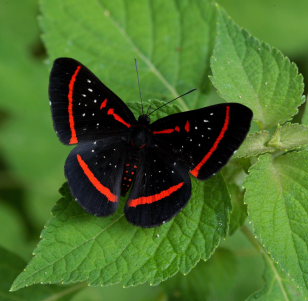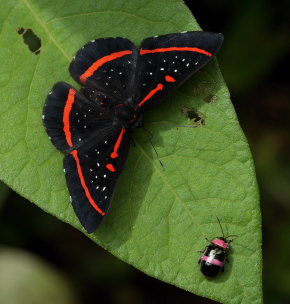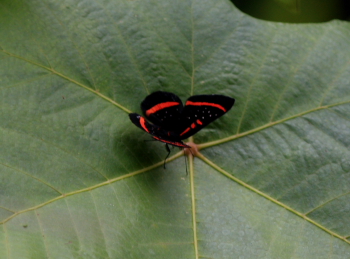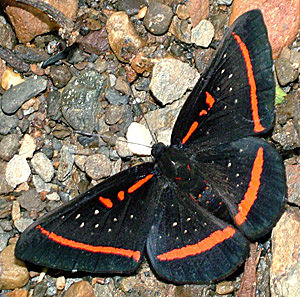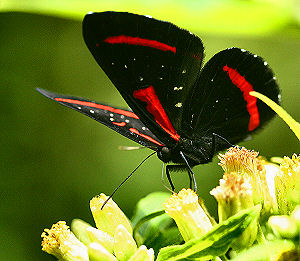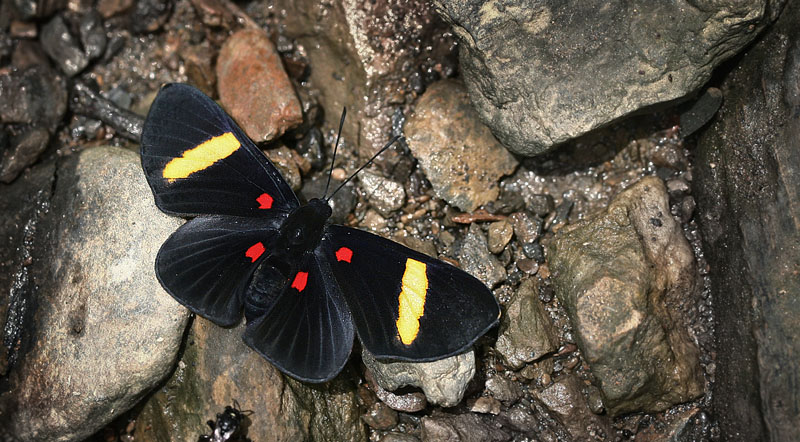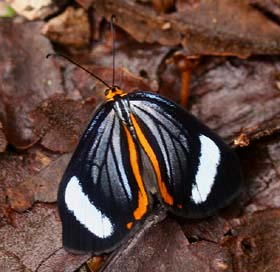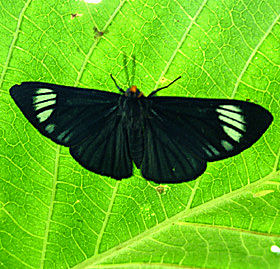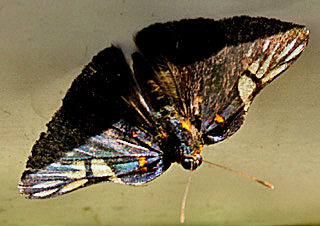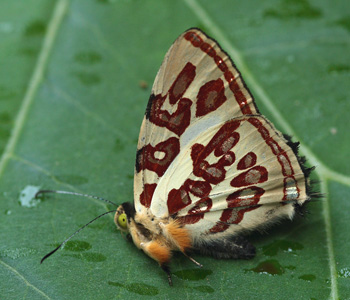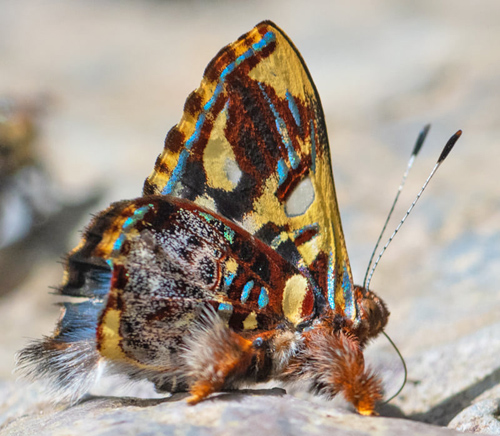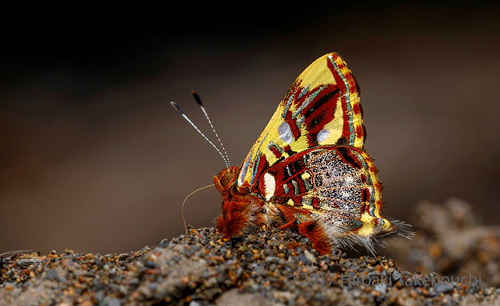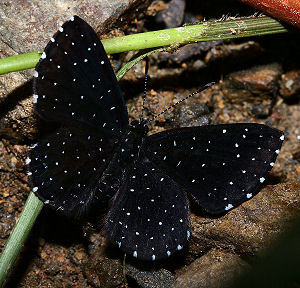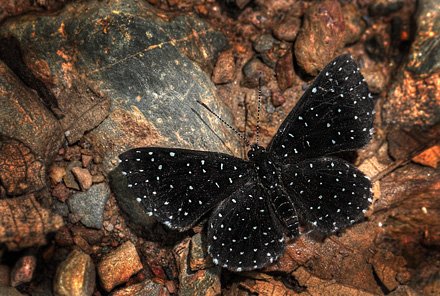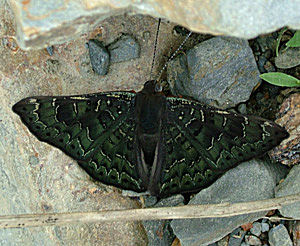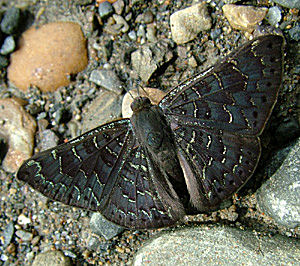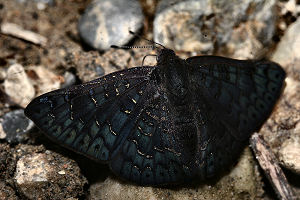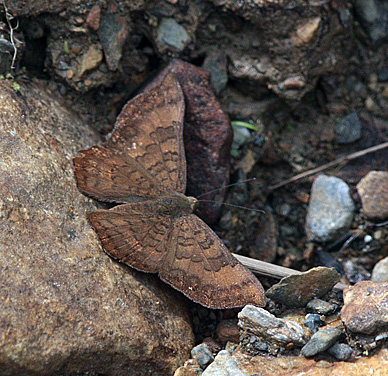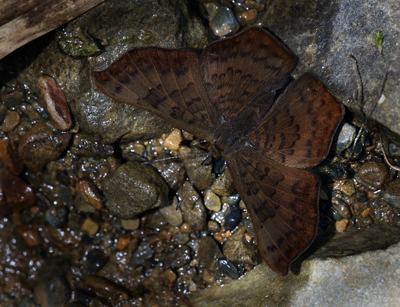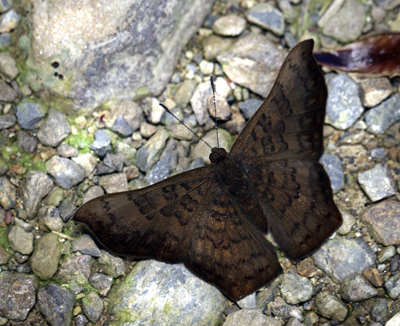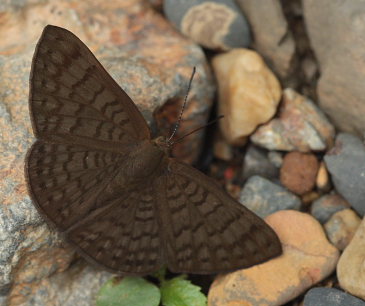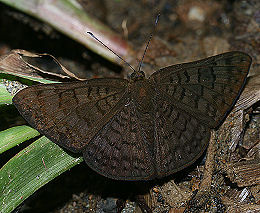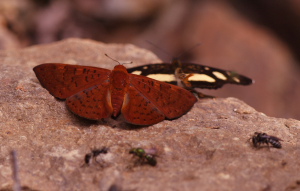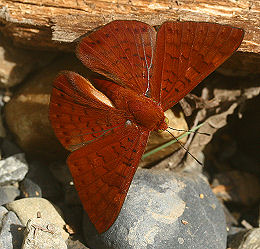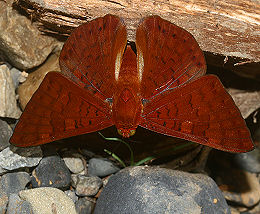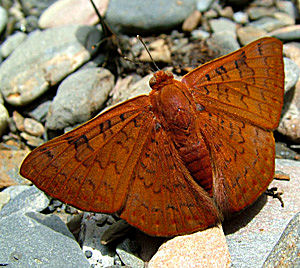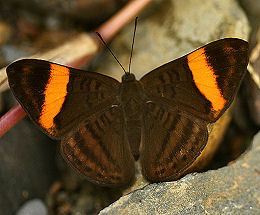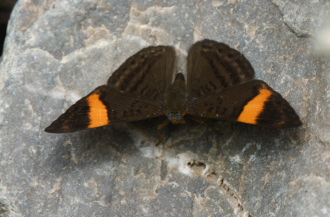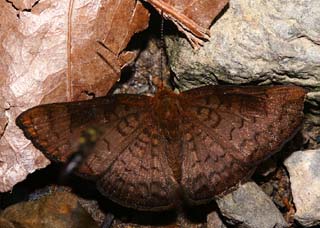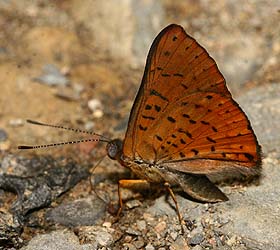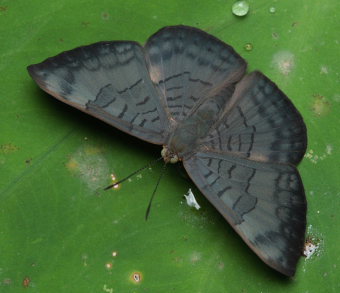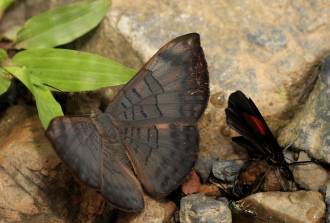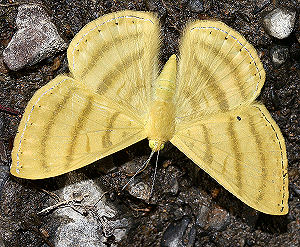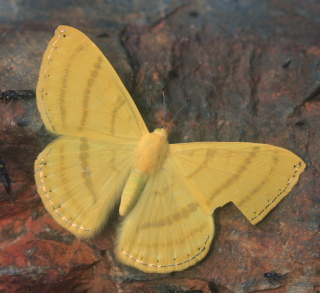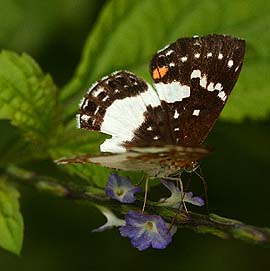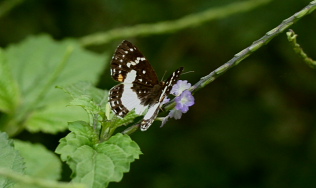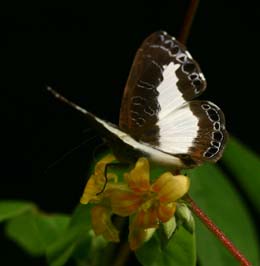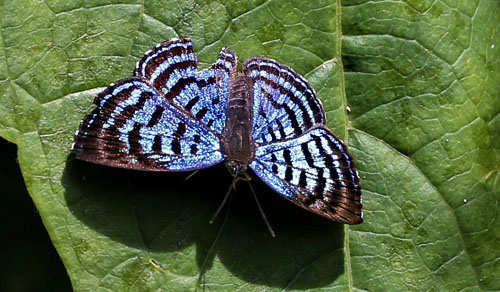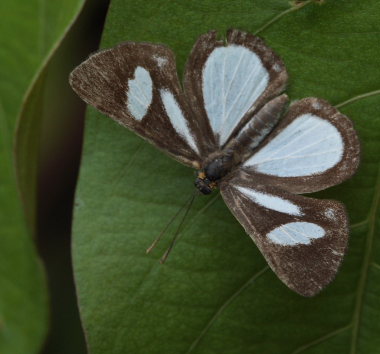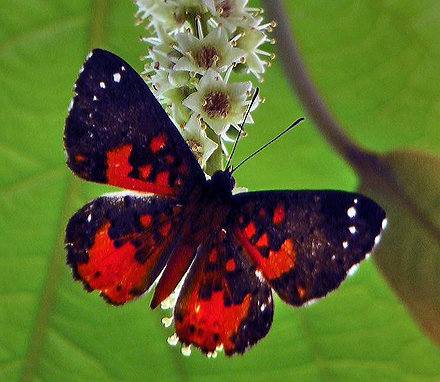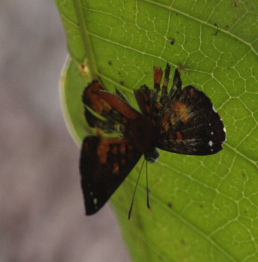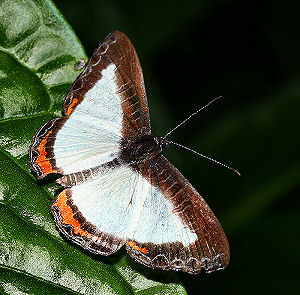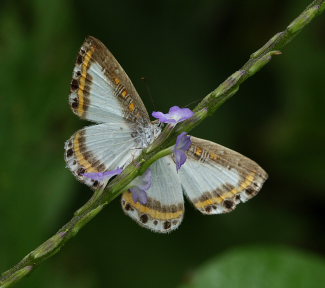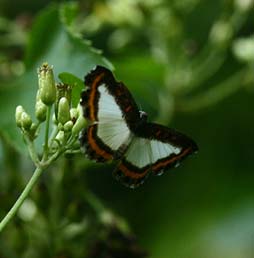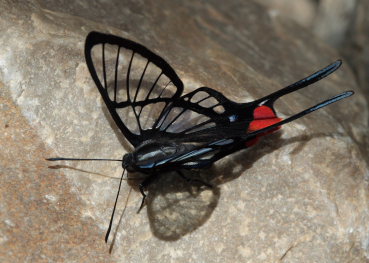Riodinidae
Mariposas de Bolivia
sitio 55
first update d. 4 february 2005
last update d. 25 december 2021
Redactor: Lars Andersen
bajo construccion
_____________________________
Metalmarks
Riodinidae
Subfamily Euselasiinae
Tribe Euselasiini
Euselasia eustola eustola (Stichel, 1919)
Euselasia eusepus (Hewitson, 1853)
Subfamily Riodininae
Tribe Mesosemiini
Mesosemia thymetus umbrosa (Stichel, 1909) & Mesosemia nerine (Stichel, 1909)
Mesosemia sp, Semomesia croesus siccata (Stichel, 1909) & Mesosemia minos (Hewitson, 1859)
Mesosemia metuana glaucoma (Stichel, 1909)?
_____________________________
Immature stages of the Rubiaceae-feeding metalmark butterflies (Lepidoptera: Riodinidae), and a new function for the tentacle nectary organs
November 2018
| Gregory J. Nielsen and Lucas A.
Kaminski;
Metalmark butterfly (Riodinidae) diversity is heavily
concentrated in the Neotropical lowland forests
but despite their prevalence basic information on
immature stages is still scarce. Here we describe the life cycle of seven taxa in the Rubiaceae-feeding section of the Mesosemiina, including three Mesosemia Hübner, [1819], three Leucochimona Stichel, 1909, and the first information for Semomesia Westwood, 1851. Immature stage morphology of Mesosemia cippus Hewitson, 1859 is described in detail through scanning electron microscopy. Generally, eggs are laid singly and caterpillars are folivorous with a cryptic green coloration except for M. cippus which has gregarious caterpillars with a bright yellow color pattern. |
_____________________________
Actoris metalmarks, Napaea actoris (Cramer, 1776)
Tribe Eurybiini
Underleaf, Eurybia patrona promota (Stichel, 1910)
Tribe Riodinini
Blue-rayed Metalmark, Lyropteryx apollonia (Westwood, 1851)
Black-rayed Metalmark, Lyropteryx terpsichore (Westwood, 1851)
Bellona Metalmark, Necyria bellona bellona (Westwood, 1851)
Glasswing Metalmark, Ithomeis aurantiaca lauronia (Schaus, 1902)
White-rayed Metalmark, Brachyglenis esthema esthema (C. Felder & R. Felder, 1862)
Tawny Metalmark, Notheme erota diadema (Stichel, 1910)
Albertus Metalmark, Monethe albertus (C. Felder & R. Felder, 1862)
Theodora Metalmark, Chalodeta theodora (C. Felder & R. Felder, 1862)
Orange-stitched Metalmark, Chalodeta chaonitis (Hewitson, 1866)
Chamaelimnas unknown species?
Chamaelimnas splendens (Grose-Smith, 1902)
Gynaea Metalmark, Detritivora gynaea (Godart, 1824)
Calephelis laverna (Godman & Salvin, 1886)
Calephelis aymaran (McAlpine, 1971)
Orange-banded Metalmark, Parcella amarynthina (C. Felder & R. Felder, 1862)
_____________________
Green Mantle, Caria unknown species? Caranavi, Yungas, Bolivia d. 19 January 2010. Photographer; Lars Andersen
See more about these mysterious beautiful jewels on the side with Emeralds Metalmarks
_____________________
Crocozona fasciata clusia (Hewitson, 1866)
Crocozona species?
Crocozona coecias (Hewitson, 1866)
Baeotis elegantula (Hopffer, 1874)
Baeotis creusis (Hewitson, 1874)
D'Abrera Pigmy, Baeotis staudingeri (D'Abrera, 1994)
Glittering Sapphire or Shining-blue Lasaia, Lasaia agesilas (Latreille, 1809)
Cat's-eye Sapphire, Lasaia arsis (Staudinger, 1887)
| The genus Sapphire
Metalmarks, Lasaia (H. Bates, 1868) contains arround
14 species, all of which are found exclusively in
the neotropics. They are small butterflies,
averaging about 28 to 32 mm in wingspan. Males
have extremely reflective wing scales, shimmering
in metallic turquoise, blue or steely grey
according to species. Females are generally a
dull earthy brown colour. Both sexes have a
similar pattern of black spots. Males are often seen along the sandbanks with others butterflies along small streams, where they suck minerals and ammonia, as well as the droppings from mammals. Females are rarely seen, and lives mostly up in the bushes and trees of Mimose, Albizia species. Pea, Fabaceae family which is the foodplant for the caterpillar. Lars Andersen and Peter Møllmann has so far seen three species in Bolivia: Glittering Sapphire, Lasaia agesilas (Latreille, 1809). Cat's-eye Sapphire, Lasaia arsis (Staudinger, 1887) & Kenneth's Sapphire, Lasaia kennethi (Weeks, 1901). But there are certainly several species? Sapphire Metalmarks species you maybe can expect to find in Bolivia are: Variegated Sapphire, Lasaia meris (Stoll, 1781). Bolivian Sapphire, L. moeros (Staudinger, 1888). L. aerugo (Clench, 1972). Clench's Sapphire, L. pseudomeris (Clench, 1972). Oily Sapphire, L. ouleus (Godman, 1903) and L. incoides (Schaus, 1902). |
Kenneth's Sapphire or Kenneth's Lasaia, Lasaia kennethi (Weeks, 1901)
_____________________
Red-barred Amarynthis, Amarynthis meneria (Cramer, 1776)
_____________________
Black Metalmark, Melanis
Electron Pixie, Melanis electron (Fabricius, 1793). Caranavi, Yungas, Bolivia d. 12 february 2007. Photographer; Lars Andersen
See more about these black jewels on the side with Black Metalmark
_____________________
Tribe Symmachiini
Xynias lithosina cynosema (Hewitson, 1874)
Clonia Metalmark, Esthemopsis clonia (C. Felder & R. Felder, 1865)
Accused Metalmark, Symmachia accusatrix (Westwood, 1851)
Tribe Helicopini
Great Jewelmark, Anteros
kupris aureocultus (Stichel, 1909)
Principalis
Jewelmark, |
Principalis
Jewelmark, |
Principalis
Jewelmark, |
| Principalis
Jewelmark, Anteros
principalis (Hopffer,
1874). The adults are elusive, and usually encountered singly, in the vicinity of rivers or streams. They normally rest on the upper surface of leaves, and always hold their wings erect when settled. This species is found in undisturbed rainforest habitats at altitudes between 0-1100m. The caterpillar folds the edge of a leaf into a tube and lives within. The foodplants include Vochysia (Vochysiaceae) and Miconia (Melastomataceae). Is distributed on the eastern slopes of the Andes from Colombia, Ecuador to Peru and Bolivia. There are 22 species in the genus Anteros, distributed variously from Mexico to Bolivia. The genus is closely allied to Sarota and Helicopis in Riodinidae family, and like them is characterised by having silvery markings on the underside wings, and very "furry" legs. |
Butterflies of
America
and the Interactive
Listing of American Butterflies
Starry Night Metalmark, Echydna punctata (C. Felder & R. Felder, 1861)
Stichel's Blue Emesis, Emesis orichalceus (Stichel, 1916)
Emesis angularis (Hewitson, 1870)
Dark Emesis, Emesis ocypore (Geyer, 1837)
Silky Emesis, Emesis brimo progne (Godman, 1903)
Great Emesis, Emesis mandana (Cramer, 1780)
Orange-barred Emesis, Emesis cypria (Felder & felder, 1861) and
Emesis temesa (Hewitson, 1870)
White-marked Emesis, Emesis fastidiosa (Ménétriés, 1855)
Astraeodes areuta (Westwood, 1851)
Tribe Nymphidiini
Lemonias zygia (Hübner, 1807)
Molpe Metalmark, Juditha caucana (Stichel, 1911)
Menander Metalmark, Menander menander thallus (Stichel, 1911)
Zelotaea leucotopus (Stichel, 1911)
Calospila emylius crispinella (Stichel, 1911)
Nymphidium ascolia (Hewitson, 1853)
Nymphidium carmentis (Stichel, 1910)
Tribe Stalachtini
Swordtails - Tribe Riodinini
sitio 57
__________________________________________________________________________
METALMARKS part3 from Peter Møllmann on Vimeo.
__________________________________________________________________________
Introduction to MetalmarksRiodinidae are a pantropical family, with the majority of species occurring in the Amazonas and Andeans eastside. There are around 1300 to 1325? known species of Riodinidaein the neotropical region, from Mexico to Argentina. |
Other Names for Riodinidae Grote 1895
From TREE of LIFE Web project! |
__________________________________________________________________________
__________________________________________________________________________ Riodinidae:
__________________________________________________________________________ dont use this pictures without permission from: photographer © Lars Andersen Mariposas de Bolivia Enero 2009 por Peter Møllmann y Lars Andersen |
link to Neotropical Butterflies of Will Carter and Kim Garwood, Metalmarks
Esmeralda hotel, Coroico, Yungas
